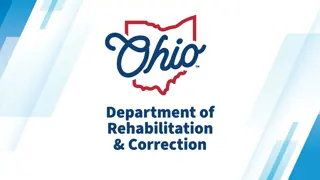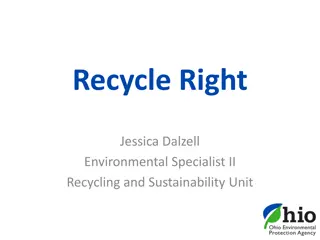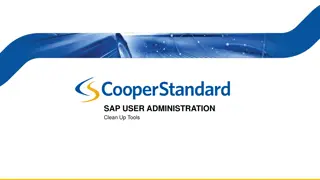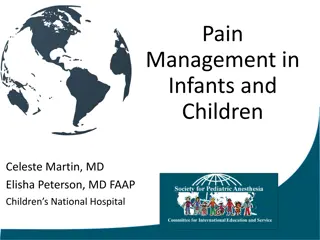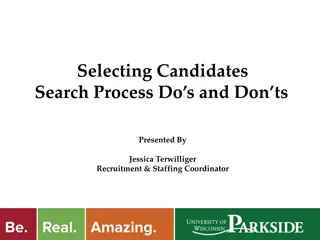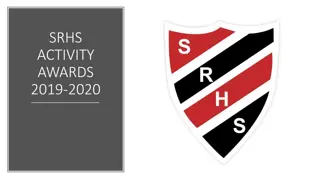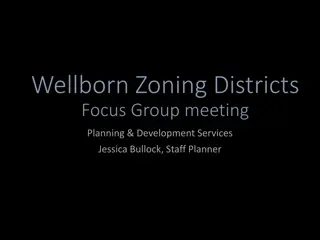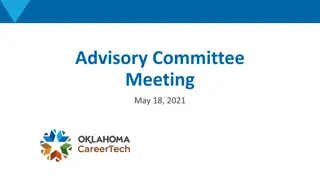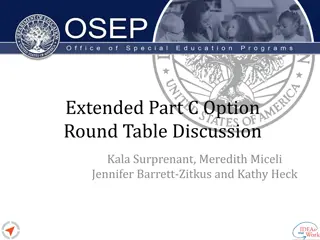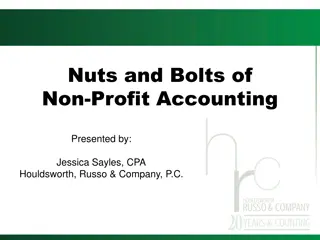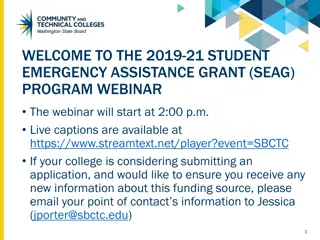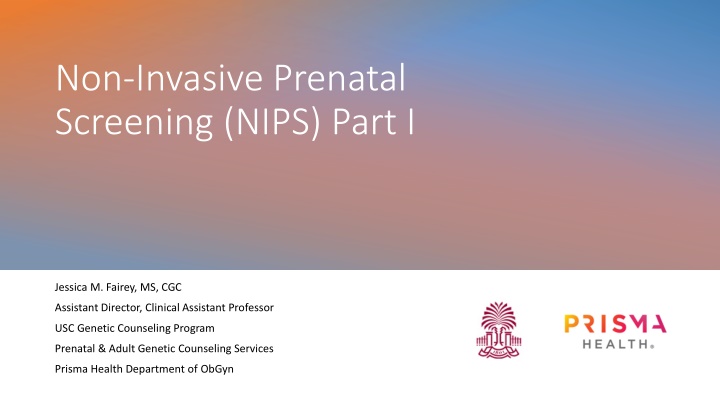
Non-Invasive Prenatal Screening (NIPS) and Genetic Counseling
Explore the history, benefits, and guidelines of Non-Invasive Prenatal Screening (NIPS) along with considerations when selecting a test and disclosing results. Learn about the significance of NIPS in prenatal care and its role in genetic counseling services.
Download Presentation

Please find below an Image/Link to download the presentation.
The content on the website is provided AS IS for your information and personal use only. It may not be sold, licensed, or shared on other websites without obtaining consent from the author. If you encounter any issues during the download, it is possible that the publisher has removed the file from their server.
You are allowed to download the files provided on this website for personal or commercial use, subject to the condition that they are used lawfully. All files are the property of their respective owners.
The content on the website is provided AS IS for your information and personal use only. It may not be sold, licensed, or shared on other websites without obtaining consent from the author.
E N D
Presentation Transcript
Non-Invasive Prenatal Screening (NIPS) Part I Jessica M. Fairey, MS, CGC Assistant Director, Clinical Assistant Professor USC Genetic Counseling Program Prenatal & Adult Genetic Counseling Services Prisma Health Department of ObGyn
Conflict of Interest Statement No conflicts to declare Discussion of labs is based on personal clinical experience
Learning Objectives Describe non-invasive prenatal screening (NIPS) Discuss considerations when selecting a test Identify helpful language in disclosing results Recognize limitations of technology
Birth Defect Etiologies 97% Normal 40 60% 3% Defects 20 25% 10 15% 8 12% 2 10% Chromosomal Prenatal Exposure Single-gene Multifactorial Unknown Adapted from Stevenson, RE and Hall, J. Human Malformations and Related Anomalies, 2nd ed. Oxford University Press, Oxford, 2006
History of NIPS 1 1997 2011 Lo et al. discovered the presence of cell- free fetal DNA in maternal plasma Commercially available in the United States Lo et al. analyzed cell-free fetal DNA for the detection of trisomy 21 (T21) in the fetus Cost of NIPT has significantly decreased since its introduction in 2011 Insurance coverage Subsequent studies established that cell- free fetal DNA was of placental origin Financial assistance available 2008 Today
Most sensitive and specific screening test for common aneuploidies Lowest false positive rate Noninvasive Prenatal Screening (NIPS) Only screening test for fetal sex aneuploidies Early gestational age allows for optimal patient decision making Risk assessment NOT diagnostic
Society Guidelines: NIPS in All Risk Population ACOG Practice Bulletin 226, May 2016, Reaffirmed 2018 All pregnant women, regardless of maternal age or aneuploidy risk, should be offered prenatal genetic screening [including NIPS] and diagnostic testing All pregnant women should be offered cfDNA screening as a primary test ISPD 2015 All pregnant women should be informed that NIPS is the most sensitive screening option for the common trisomies 13,18,21 (i.e., Patau, Edwards and Down syndrome) ACMG 2016
Deletions & Expanded Aneuploidy Various laboratories offer deletion analysis of relatively well described conditions such as 22q11.2, Prader Willi and Angelman syndromes, Williams syndrome, etc. Current guidelines do not recommend NIPS deletion screening as sensitivity/specificity/PPV are difficult to estimate. Chromosomal Microarray (CMA), performed on CVS or amnio sample, can detect deletions and duplications which occur in approximately 1.5% of all pregnancies, regardless of maternal age.
NIPS Technology Counting Method via Massively Parallel Sequencing See Figure Most common NIPS platform used LabCorp, Otogenetics, Myriad, Invitae, SNP based methodology Compares SNP sequences from maternal DNA and cell free DNA Difference in allele types provide the fetal genotype Allows for screening of triploidy Determination of zygosity in twin pregnancy Natera
Fetal Fraction (FF) = fetal component of cell-free DNA (cfDNA) in maternal circulation Fetal cfDNA ------------------------------------ Fetal cfDNA + maternal cfDNA cfDNA fragments are derived from cells undergoing apoptosis in maternal circulation Fetal cfDNA derived from placental trophoblasts Maternal cfDNA derived from adipocytes + WBCs FF in maternal plasma ranges from 10-15% between 10-20 weeks2 FF is lower at early GA and increases ~ 0.1% weekly from 13-20 weeks 2
Common Factors Affecting FF Prenatal Diagnosis, Volume: 35, Issue: 8, Pages: 816-822, First published: 26 May 2015, DOI: (10.1002/pd.4625)
Additional Factors Affecting FF Placental Size 3-6 Studies have found an association b/w low FF and placental dysfunction including preclampsia and FGR HBB Hemoglobinopathies 6,7 Active autoimmune disease Anticoagulation Therapy 10, 11 Maternal Factors Aneuploidy 3,9 FF is decreased in trisomies 13, 18, triploidy Test failures due to low FF are generally higher in twins Varies by chorionicity and cfDNA platform Multiple gestation 9,10
Maternal history Patient weight Medications Medical condition(s) Pregnancy history Considerations for NIPS selection Multiples or vanished twin Recurrent first trimester loss Family history Prior affected child Consanguinity Carrier test results Insurance
Pre-Test Counseling Possibility of THREE test results Low Risk, High Risk, Uninformative Non-Diagnostic Allows for fetal sex prediction based on presence/absence of Y chromosome Positive screening results are recommended to have diagnostic follow up Prenatal diagnosis Maternal karyotype
Post-Test Counseling Limited scope of screening test Discuss screening results in terms of Residual Risk and Positive Predictive Value (PPV) Offer MSAFP-only after 15w Interpretation should always be in the context of clinical findings Results may represent chromosomal changes from Mother Placenta Fetal mosaicism Vanished twin
A low risk or negative result greatly reduces the chances for these chromosome conditions in your pregnancy but does not eliminate them. This screening test evaluated 5 chromosomes [13,18,21,X and Y]. For information on the other 18 chromosomes, prenatal diagnosis remains an option. Low Risk Result
Your NIPS result shows an increased risk for______ in your pregnancy. This is not a diagnosis. The chance that the baby is truly affected is ____% (calculate PPV), with ____% chance baby does not have this condition. The only way we can be sure is by prenatal diagnosis or testing after birth Available options (CVS vs Amniocentesis) Next Steps: Genetic Counseling/MFM Referral to review these results and help you decide next steps Targeted ultrasound High Risk Result
For a test with known sensitivity and specificity, you can project the PPV for a specific population (with a known or estimated prevalence) using maternal age as apriori risk Contrast the PPV of trisomy 21 at 16 weeks by maternal age Positive Predictive Value (PPV) 23 @ EDD PPV 50% 33 @ EDD PPV 71% Consider calculating PPV on your patient s results integrating specificity and sensitivity reported on the lab report and using a published calculator such as: 43 @ EDD PPV 97% https://www.perinatalquality.org/Vendors/NSGC/NIPT/ Chance that the fetus is truly affected given a positive result
Low Fetal Fraction Redraw? Atypical Finding May suggest chromosome abnormality outside scope of NIPS May suggest maternal chromosome aberration Consider calling lab for additional information Refer to genetic counseling/MFM for consideration of diagnostic testing and possible maternal workup Beware the Uninformative Result!
If ultrasound findings corroborate the NIPS result, is prenatal or postnatal dx still necessary?
Confirmation of diagnosis and cytogenetic nature of test result Chromosomal rearrangement vs trisomy vs mosaicism Yes! Allows for determination of prognosis/management Allows for estimation of recurrence risk in subsequent pregnancies May inform family history
References 1. Ravitsky, V., Roy, M., Haidar, H., Henneman, L., Marshall, J., Newson, A.J., Ngan, O., Nov-Klaiman, T. The Emergence and Global Spread of Noninvasive Prenatal Testing 2021 Oct. Annu. Rev. Genom. Hum. Genet. doi: 10.1146/annurev-genom-083118-015053 2. Kinnings, S. L., Geis, J. A., Almasri, E., Wang, H., Guan, X., McCullough, R. M., Bombard, A. T., Saldivar, J.-S., Oeth, P., and Deciu, C. (2015) Factors affecting levels of circulating cell-free fetal DNA in maternal plasma and their implications for noninvasive prenatal testing. Prenat Diagn, 35: 816 822. doi: 10.1002/pd.4625. 3. Rolnik, D.L., da Silva Costa, F., Lee, T.J., Schmid, M. and McLennan, A.C. (2018), Association between fetal fraction on cell-free DNA testing and first-trimester markers for pre-eclampsia. Ultrasound Obstet Gynecol, 52: 722-727. https://doi.org/10.1002/uog.18993 4. Clapp MA, Berry M, Shook LL, Roberts PS, Goldfarb IT, Bernstein SN. Low Fetal Fraction and Birth Weight in Women with Negative First-Trimester Cell-Free DNA Screening. Am J Perinatol. 2020 Jan;37(1):86-91. doi: 10.1055/s-0039-1700860. Epub 2019 Nov 18. PMID: 31739367. 5. Gerson KD, Truong S, Haviland MJ, O'Brien BM, Hacker MR, Spiel MH. Low fetal fraction of cell-free DNA predicts placental dysfunction and hypertensive disease in pregnancy. Pregnancy Hypertens. 2019 Apr;16:148-153. doi: 10.1016/j.preghy.2019.04.002. Epub 2019 Apr 13. PMID: 31056151. 6. Morano D, Rossi S, Lapucci C, Pittalis MC, Farina A. Cell-Free DNA (cfDNA) Fetal Fraction in Early- and Late-Onset Fetal Growth Restriction. Mol Diagn Ther. 2018 Oct;22(5):613-619. doi: 10.1007/s40291-018-0353-9. PMID: 30056492. 7. Putra M, Idler J, Patek K, Contos G, Walker C, Olson D, Hicks MA, Chaperon J, Korzeniewski SJ, Patwardhan SC, Sokol RJ. The association of HBB- related significant hemoglobinopathies and low fetal fraction on noninvasive prenatal screening for fetal aneuploidy. J Matern Fetal Neonatal Med. 2021 Nov;34(22):3657-3661. doi: 10.1080/14767058.2019.1689558. Epub 2019 Nov 17. PMID: 31736384. 8. Putra M, Kaseniit KE, Hicks MA, Muzzey D, Hackney D. The impact of HBB-related hemoglobinopathies carrier status on fetal fraction in noninvasive prenatal screening. Prenat Diagn. 2022 Apr;42(4):524-529. doi: 10.1002/pd.6127. Epub 2022 Mar 23. PMID: 35224763; PMCID: PMC9311838. 9. Hui, L, Bianchi, DW. Fetal fraction and noninvasive prenatal testing: What clinicians need to know. Prenatal Diagnosis. 2020; 40: 155 163. https://doi.org/10.1002/pd.5620 10. Bevilacqua, E., Chen, K., Wang, Y., Doshi, J., White, K., de Marchin, J., Conotte, S., Jani, J.C. and Schmid, M. (2020), Cell-free DNA analysis after reduction in multifetal pregnancy. Ultrasound Obstet Gynecol, 55: 132-133. https://doi.org/10.1002/uog.20366
References Cont. 11. Burns W, Koelper N, Barberio A, Deagostino-Kelly M, Mennuti M, Sammel MD, Dugoff L. The association between anticoagulation therapy, maternal characteristics, and a failed cfDNA test due to a low fetal fraction. Prenat Diagn. 2017 Nov;37(11):1125-1129. doi: 10.1002/pd.5152. Epub 2017 Oct 6. PMID: 28881030. 12. Gil MM, Quezada MS, Revello R, Akolekar R, Nicolaides KH. Analysis of cell-free DNA in maternal blood in screening for fetal aneuploidies: updated meta-analysis. Ultrasound Obstet Gynecol. 2015;45:249-266. 13. Gregg, A., Van den Veyver, I., Gross, S., Madankumar, R., Rink, C., Norton, M. (2014), Non Invasive Prenatal Screening by Next Generation Sequencing. Annual Review of Genomics and Human Genetics, 15:1, 327-347. 14. Rose, Nancy C. MD; Kaimal, Anjali J. MD, MAS; Dugoff, Lorraine MD; Norton, Mary E. MD; American College of Obstetricians and Gynecologists Committee on Practice Bulletins Obstetrics Committee on Genetics Society for Maternal-Fetal Medicine. Screening for Fetal Chromosomal Abnormalities: ACOG Practice Bulletin, Number 226. Obstetrics & Gynecology: October 2020 - Volume 136 - Issue 4 - p e48-e69 doi: 10.1097/AOG.0000000000004084 15. Benn P, Borrell A, Chiu RWK, et al. Position statement from the Chromosome Abnormality Screening Committee on behalf of the Board of the International Society for Prenatal Diagnosis. Prenat Diagn. 2015;35(8):725-734. doi:10.1002/pd.4608. 16. Anthony R. Gregg, Brian G. Skotko, Judith L. Benkendorf, Kristin G. Monaghan, Komal Bajaj, Robert G. Best, Susan Klugman, Michael S. Watson. Noninvasive prenatal screening for fetal aneuploidy, 2016 update: a position statement of the American College of Medical Genetics and Genomics. Genetics in Medicine, 2016; DOI: 10.1038/gim.2016.97 17. Gregg AR, Aarabi M, Klugman S, Leach NT, Bashford MT, Goldwaser T, Chen E, Sparks TN, Reddi HV, Rajkovic A, Dungan JS; ACMG Professional Practice and Guidelines Committee. Screening for autosomal recessive and X-linked conditions during pregnancy and preconception: a practice resource of the American College of Medical Genetics and Genomics (ACMG). Genet Med. 2021 Oct;23(10):1793-1806. 18. Carrier screening in the age of genomic medicine. Committee Opinion No. 690. American College of Obstetricians and Gynecologists. Obstet Gynecol 2017;129:e35 40. 19. Norton ME, Jacobsson B, Swamy GK, Laurent LC, Ranzini AC, Brar H, Tomlinson MW, Pereira L, Spitz JL, Hollemon D, Cuckle H, Musci TJ, Wapner RJ. Cell-free DNA analysis for noninvasive examination of trisomy. N Engl J Med. 2015 Apr 23;372(17):1589-97. doi: 10.1056/NEJMoa1407349. Epub 2015 Apr 1. PMID: 25830321.
24 yo G1 Hispanic Female: NIPS Result XXY (Klinefelter Syndrome)
Yq11.21 Maternal Karyotype Deletion of SHOX gene
Patient has an X;Y translocation referral to endocrinology and informing GYN management Current pregnancy has 50% chance of possessing the derivative X chromosome Due to X inactivation, phenotype is variable Postnatal karyotype recommended Informs recurrence risk for future pregnancies 50% chance of passing on derivative X Likely male lethal resulting in first trimester SAB Allows for family testing Post-Test Counseling
32 yo G3P2002: Nonreportable NIPS x 2
Post-Test Counseling Trisomy 13 CPM Increased risk for placental insufficiency and fetal growth restriction Follow-up growth scans NICU consult Future antenatal testing
Questions? Up Next NIPS Part II Utilizing cffDNA technology for expanded aneuploidy screening and single gene disorders Jessica.Fairey@uscmed.sc.edu Office: 803-545-5746


